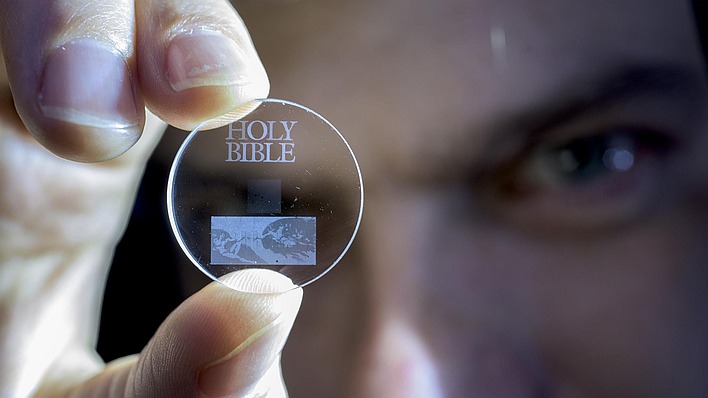5D Storage Breakthrough Stuffs A Massive 500TB Of Data On A Tiny Disc With Amazing Endurance

With any type of creative or engineering project, you have to be aware of your target, whether that's the audience for a joke, the landscape for a building, or the use-case for a piece of hardware or software. All practical attempts to create anything have to start with a list of project goals or intentions.
There's little better example of this than the new "5D" data storage technology created by researchers at the University of Southampton's Optoelectronics Research Centre. Using femtosecond laser pulses, the technique alters the crystalline structure of glass in such a precise way that, according to its creators, could allow it store up to 500 terabytes of data on a glass disc the size of a Blu-ray. That's enormous density, but it has some major downsides that mean you probably won't be buying "5DVDs" for personal use anytime soon.
We're not optical scientists, but we'll share our understanding of the technology. Essentially, what is happening is that the femtosecond laser pulses create voxels—that is, "volume pixels", or 3D pixels, in glass by altering the structure of the glass in such a way as to create specific angles of refraction and "retardance," which is a shift in polarization. Combined with the voxels' normal three spatial dimensions, these five qualities give us our "five dimensional" data storage.

Strictly speaking, this isn't a new idea; the same group at the University of Southampton demonstrated the concept way back in 2013, and in 2016 they announced that they had perfected the recording technique. Just one problem: it was excruciatingly slow. The announcement this time is that the researchers have figured out a way to move things along a bit, bringing this technology much closer to practicality, and thus viability as a product.
Don't get too excited, though. The group behind the announcement cheerfully states that they have achieved writing speeds of up to a million voxels per second, or "about 225 KB/sec." That's slow by today's standards—slower than an old-school CD-ROM—but the researchers also note that refined parallel recording schemes could be used to write out the theorized 500 TB discs in "about 60 days," a transfer rate of around 100 MB/second.
Besides high density, these glass discs have other advantages to compensate for the slow recording speed. They're incredibly durable; back in 2016 the researchers claimed that the discs could withstand temperatures up to 1,000°C and that they could last billions of years at room temperature without degrading. Given the high density and extreme durability, that makes these discs perfectly suited for extremely-long-term archival purposes. The authors also state that the discs could be read back at "tens of megabytes per second" with "automatic polarization imaging and more powerful decoding algorithms." That's plenty fast enough for archived data.

